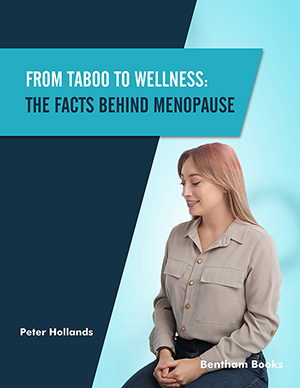Abstract
Background: Pregnancy is a period of physiological and hormonal alterations that can decrease the quality of life (QoL). Women’s subjective perception of QoL is clinically relevant for assessing the effectiveness of interventions and identifying susceptibility to depression.
Objectives: This review aims to identify, present, and critically appraise the assessment tools of QoL during pregnancy.
Methods: A narrative review of the English-language literature was conducted through the PubMed, CENTRAL, Scopus, and Google Scholar electronic databases.
Conclusion: Several generic instruments have been proposed, such as pregnancy-specific and disease- specific questionnaires concerning common diseases during pregnancy. Plasma, salivary and hair cortisol, inflammatory, genetic and epigenetic biomarkers and gut microbiome have also been investigated as potential indicators of maternal anxiety. Their use can quantify the association between pregnancy-specific anxiety and QoL. Application of validated assessment tools of QoL during pregnancy could improve QoL, maternal health interventions, and early identification of susceptibility to maternal depression.
Keywords: Quality of life, health-related quality of life, assessment tools, questionnaires, biomarkers, pregnancy.
[http://dx.doi.org/10.1016/0277-9536(95)00112-K] [PMID: 8560308]
[http://dx.doi.org/10.1111/j.1525-1497.2004.40097.x] [PMID: 15693927]
[http://dx.doi.org/10.1111/aogs.13624] [PMID: 30985917]
[http://dx.doi.org/10.1080/0167482X.2017.1289167] [PMID: 28635532]
[http://dx.doi.org/10.1186/s12884-019-2546-6] [PMID: 31640626]
[http://dx.doi.org/10.1017/S0033291700046742] [PMID: 7100363]
[http://dx.doi.org/10.1017/S0033291700008047] [PMID: 3399597]
[http://dx.doi.org/10.1186/1477-7525-11-214] [PMID: 24365336]
[http://dx.doi.org/10.1186/s12874-015-0092-0] [PMID: 26582386]
[http://dx.doi.org/10.1186/1471-2393-13-3] [PMID: 23324494]
[http://dx.doi.org/10.1891/jnm-v14i3a005] [PMID: 17278340]
[http://dx.doi.org/10.1080/0167482X.2017.1285898] [PMID: 28376697]
[http://dx.doi.org/10.1016/0022-3999(83)90054-5] [PMID: 6620208]
[http://dx.doi.org/10.1186/1471-2393-10-81] [PMID: 21143961]
[http://dx.doi.org/10.1097/00004583-198805000-00004] [PMID: 3379012]
[http://dx.doi.org/10.1080/01674820400017830] [PMID: 15715018]
[http://dx.doi.org/10.1186/1477-7525-6-32] [PMID: 18471301]
[http://dx.doi.org/10.1016/j.ijnurstu.2009.06.012] [PMID: 19646694]
[http://dx.doi.org/10.1016/j.gaceta.2011.05.010] [PMID: 21871693]
[http://dx.doi.org/10.1002/nau.24121] [PMID: 31385364]
[http://dx.doi.org/10.1080/00016340500456373] [PMID: 16817074]
[http://dx.doi.org/10.1016/j.jad.2015.01.044] [PMID: 25704562]
[http://dx.doi.org/10.1192/bjo.2018.75] [PMID: 30762504]
[http://dx.doi.org/10.1177/13591053030086008] [PMID: 14670208]
[http://dx.doi.org/10.3109/01674829809048501] [PMID: 9638601]
[http://dx.doi.org/10.1192/bjp.155.3.356] [PMID: 2611547]
[http://dx.doi.org/10.1007/s10865-019-00068-7] [PMID: 31183596]
[http://dx.doi.org/10.1016/j.jad.2018.04.116] [PMID: 29730512]
[http://dx.doi.org/10.1002/cpp.2149] [PMID: 29094777]
[http://dx.doi.org/10.1007/s40279-018-0961-x] [PMID: 30094797]
[http://dx.doi.org/10.1080/09638288.2020.1802520] [PMID: 32748671]
[http://dx.doi.org/10.1055/s-0043-102693] [PMID: 28552999]
[PMID: 3203834]
[http://dx.doi.org/10.1186/s12884-019-2614-y] [PMID: 31783733]
[http://dx.doi.org/10.1590/S0100-72032014000300007] [PMID: 24728317]
[http://dx.doi.org/10.1037/pas0000736] [PMID: 31120297]
[http://dx.doi.org/10.1186/s12884-016-0915-y] [PMID: 27245670]
[http://dx.doi.org/10.1016/j.psyneuen.2008.08.024] [PMID: 18947933]
[http://dx.doi.org/10.1159/000495007] [PMID: 30541006]
[http://dx.doi.org/10.1016/j.ijoa.2011.09.008] [PMID: 22119632]
[http://dx.doi.org/10.1111/j.1447-0756.2010.01473.x] [PMID: 21463431]
[http://dx.doi.org/10.1016/j.biopsycho.2011.05.007] [PMID: 21645584]
[http://dx.doi.org/10.1002/ajhb.22489] [PMID: 24265252]
[http://dx.doi.org/10.3390/nu9111206] [PMID: 29099069]
[http://dx.doi.org/10.1016/j.bbi.2006.08.006] [PMID: 17029703]
[http://dx.doi.org/10.1097/NNR.0000000000000334] [PMID: 30829924]
[http://dx.doi.org/10.1016/j.jad.2019.04.059] [PMID: 31029013]
[http://dx.doi.org/10.1016/j.psyneuen.2018.05.020] [PMID: 29807325]
[http://dx.doi.org/10.1016/j.psyneuen.2015.01.006] [PMID: 25638481]












